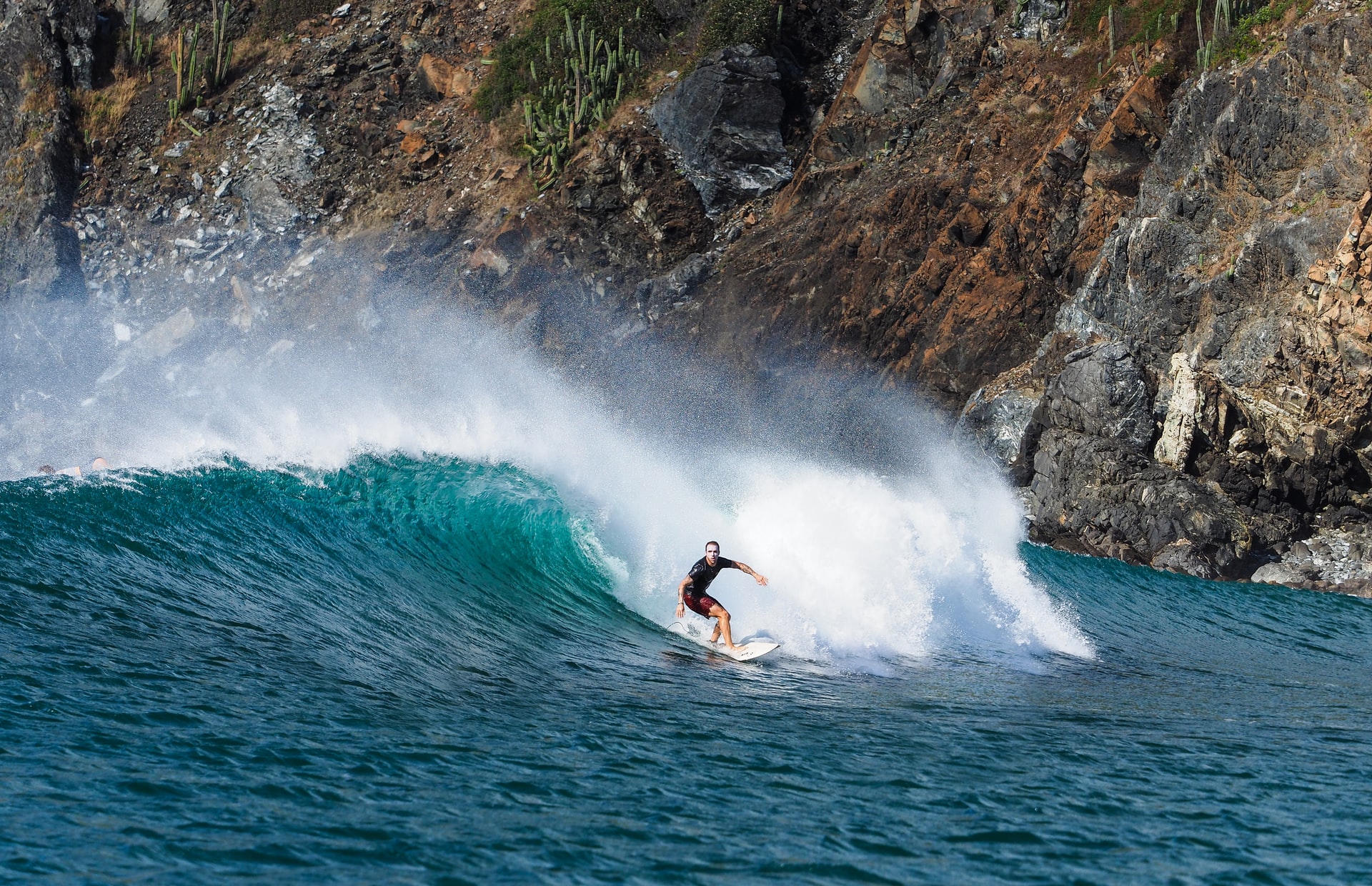As a surfer, it is likely that you have come across the terms beach break, reef break, and point break.
Although the former two are easily determined, the latter is slightly less obvious. So what is a point break?
A point break is simply a wave that breaks over, or because of, a rock. This often occurs at the point of a headland, hence the name point break.
Below we will dive deeper into how a point break wave works, how it differs from other breaks, its advantages, and disadvantages, as well as any safety precautions that should be kept in mind.
- What Is a Point Break?
- How Does a Point Break Work?
- How Is a Point Break Different From Other Types of Breaks?
- What Benefits Does a Point Break Offer?
- What Downsides Does a Point Break Have?
- Is Surfing a Point Break Dangerous?
- How Can I Spot Point Breaks?
- Should Beginners Surf Point Breaks?
- 4 Practical Tips When Surfing Point Breaks
- Conclusion
- You Might Also Like…
What Is a Point Break?
Considered by many surfers as the perfect wave, a point break occurs when a wave wraps around a large rock or headland and into a cove or bay.
Because of the way in which they break, point breaks tend to be the long, uninterrupted waves, which result in the longest surfable ride.
A point break’s ocean floor can consist of rock, sand, or coral reef. As the wave does not break because of the ocean floor consistency, this does not affect the wave, unless there is a big depth change.
Taking a look at the video below of one of the longest waves in the world, you can see how it is breaking around the point of a headland. This is also true for a number of the world’s longest rides.
This perfectly represents the effects of the ideal conditions when swell meets the wind, and together they meet the land.
How Does a Point Break Work?
Visualizing how a point break works may be difficult, therefore the easiest way to understand the simple concept is through an image.
In the above picture, the perfect situation is created to form a point break wave. As you can see, there is an outcrop of landmass, or “point”.
The yellow arrows represent the swell direction, and the red lines indicate the direction of the breaking waves.
So what exactly is happening?
As the swell approaches land, it does so in a solid line. If there is no obstruction due to rocks, landmass, or a steep change in the ocean floor, the swell will make its way towards the coastline with little or no break.
However, when there is a headland added, the rocks split the swell into two parts, causing a break in the uniform wave.
When this happens, the broken sections of the wave “pull” the unbroken section down, causing a break to run parallel with the coastline (90° from the original swell direction).
If this is still not clear, it may help to understand point break waves by understanding the fundamental differences between a point break, reef break, and shore break.
How Is a Point Break Different From Other Types of Breaks?
Let’s take a quick look at the three different breaks and what creates them.
Beach Break
A beach break is created by the shallow sandy bottom of a coastline, or in some cases by a jetty.
The break can be caused by either a sand bar slightly off the coast or a sloping ocean floor.
These breaks form closer to the land but are often irregular due to the changing depth and consistency of the ocean bed.
Reef Break
Reef breaks are created by a reef under the water. This can be a coral, rock, or sometimes kelp reef.
As the swell meets the reef, due to the change in water depth, it causes the wave to peak up and then break.
It is common for these breaks to occur far out at sea, often requiring a boat to access the wave.
One famous reef break is Teahupo’o off the coast of Tahiti.
As you can see in the above video of Teahupo’o, reef breaks are often large and hollow due to the uninterrupted ocean swell that breaks upon them.
Point Break
As discussed above, a point break is caused by a headland or rock. This means that the swell does not require a steep change in the ocean floor to break the wave.
This is the biggest difference between a point break and a reef or shore break.
In the simplest of terms, a reef or shore break brings swell to a peak which causes them to break, while a point break is formed by the splitting of a wave.
What Benefits Does a Point Break Offer?
Point breaks are the chosen break from many seasoned surfers, and it comes with good reason.
Disregarding the hindrance of the incorrect wind direction, two of the biggest limiting factors of surfing are consistency and the length of the unbroken wave.
When surfing a point break, both of the above factors are dealt with.
Point breaks are often the longest rides. This is because, in the correct conditions, the wave will break at the point and move uniformly down the line, unlike beach breaks that will break often in a straight line across the beach.
Point breaks come with high consistency. The wave will always break from the same point, meaning the guesswork and positioning required on a beach break are eliminated.
Another benefit of a point break is that it is possible for multiple riders to ride the same wave, although those closer to the point will always have the longest ride.
A combination of these two factors along with the wrapping of the wave around the point leaves perfectly forming, long riding barrels with hollow tubes.
What Downsides Does a Point Break Have?
As it is with everything in the world, point breaks have their downsides.
Although they are often the best forming waves, point breaks can be difficult to surf.
Some of the downsides of surfing a point break include:
- Overcrowded waters: Because point breaks are the best waves, you can expect a crowd on any day that the waves are rolling.
Apart from this, because the wave breaks at the same point, you will need to wait in line if you want the longest ride.
- A long paddle back to the point: A point break wave will often allow you to travel further down the coast on a single ride.
Although this is a sought experience among surfers, it does mean that you will have a long paddle back to the starting point.
In the longest breaks, some surfers may even choose to exit the water and walk back to the point because of the distance.
- Entering the water: Entering the water of a point break can be tricky. Because the waves are breaking into the landmass that you will be entering the water from, timing is essential.
A miss-timed entry can lead to being smashed against the rocks that you have just left.
- A wave for the advanced: Pointbreaks are steep, fast, and often hollow waves.
If you are not quick to get on your feet and have advanced control over your surfboard, these waves will only leave you being crumbled inside of them.
Is Surfing a Point Break Dangerous?
Surfing any type of wave is dangerous, but are point breaks more dangerous than others?
Pointbreaks can be more dangerous than other breaks, particularly when compared to beach breaks.
Because of the added landmass factor mentioned above, along with the steep waves, only experienced surfers should attempt to surf on a point break.
That being said, reef breaks are often considered more dangerous than a point break because of their nature to have shallow water breaking on top of a hard surface.
A point break, on the other hand, can occur in water that is deeper than that of a reef, as well as over-sand.
How Can I Spot Point Breaks?
Although reasonably rare, point breaks are fairly easy to spot.
If you are looking for a point break, keep an eye out for coastal areas with rocky outcrops (as in the image shown previously).
However, just because there is a headland, it does not mean it will form a point break.
Each spot will need to right swell direction, as well as the correct wind to form a perfect point break wave.
These two factors will also change according to the shape of the landmass.
Once you have found a potentially promising headland, keep an eye on the swell and wind charts, and when everything seems to line up, take a trip to the spot and see how it is working.
You will always know if you are looking at a point break when the waves are breaking from a single landmass point at one end of the beach.
Should Beginners Surf Point Breaks?
Point breaks are, more often than not, the most difficult waves to surf on.
Because of this, it is not a good idea to surf a point break if you are a beginner surfer.
If you are a beginner, the best option you have is to surf a sandy bottom beach break.
Once you have mastered paddling techniques, popping up, duck diving, and maneuvering your board, it may be time for you to move onto more advanced breaks such as point or reef breaks.
4 Practical Tips When Surfing Point Breaks
If you are ready to hit your first point break, you most likely feel both excited and a little nervous.
The following tips may help you to go in with more confidence, as well as ease your mind:
1. Surfing Point Breaks Are About Flow
You need to find the rhythm of the waves and match them. Spend some time watching how the waves break along the beach.
Pay attention to how each section works as well as how the waves break into the rocks.
2. Dig in Your Rail
Because of their steep nature, it is important to dig in the rail of your board. Get low, turn sharp, and stay committed.
3. Watch the Locals
Every point break will come with its set of locals. When surfing in a new spot, watch the locals. Pay attention to how and when they enter the water.
The spots in which they sit, the angle that they take off, as well as when they choose to kick out are all important factors that you can learn from simply observing or asking a few questions.
4. Take Your Time and Have Fun
Point breaks, as mentioned many times before, are long rides.
Because of this, you can take your time to adjust to the wave, watch what is happening, and make your move.
This is very different from the style of surfing conducted on short beach breaks.
Conclusion
A point break occurs when the swell hits a headland or outcrop of a landmass.
These waves are the rarest of breaks but come with the cleanest and longest rides.
Point breaks are often the most difficult waves to surf. However, once mastered, there will be no turning back.
You Might Also Like…
-

Do Surfers Ride Switchfoot? 5 Benefits (& Why You Should Learn It)
-

Do Surfers Shave Their Legs? 5 Common Reasons (+Pros & Cons)
-

Do Surfers Wear Helmets? 8 Situations You Should Wear One (+4 Cons)
-

Do Surfers Poop in the Ocean? Myths & Facts (+5 Tips)
-
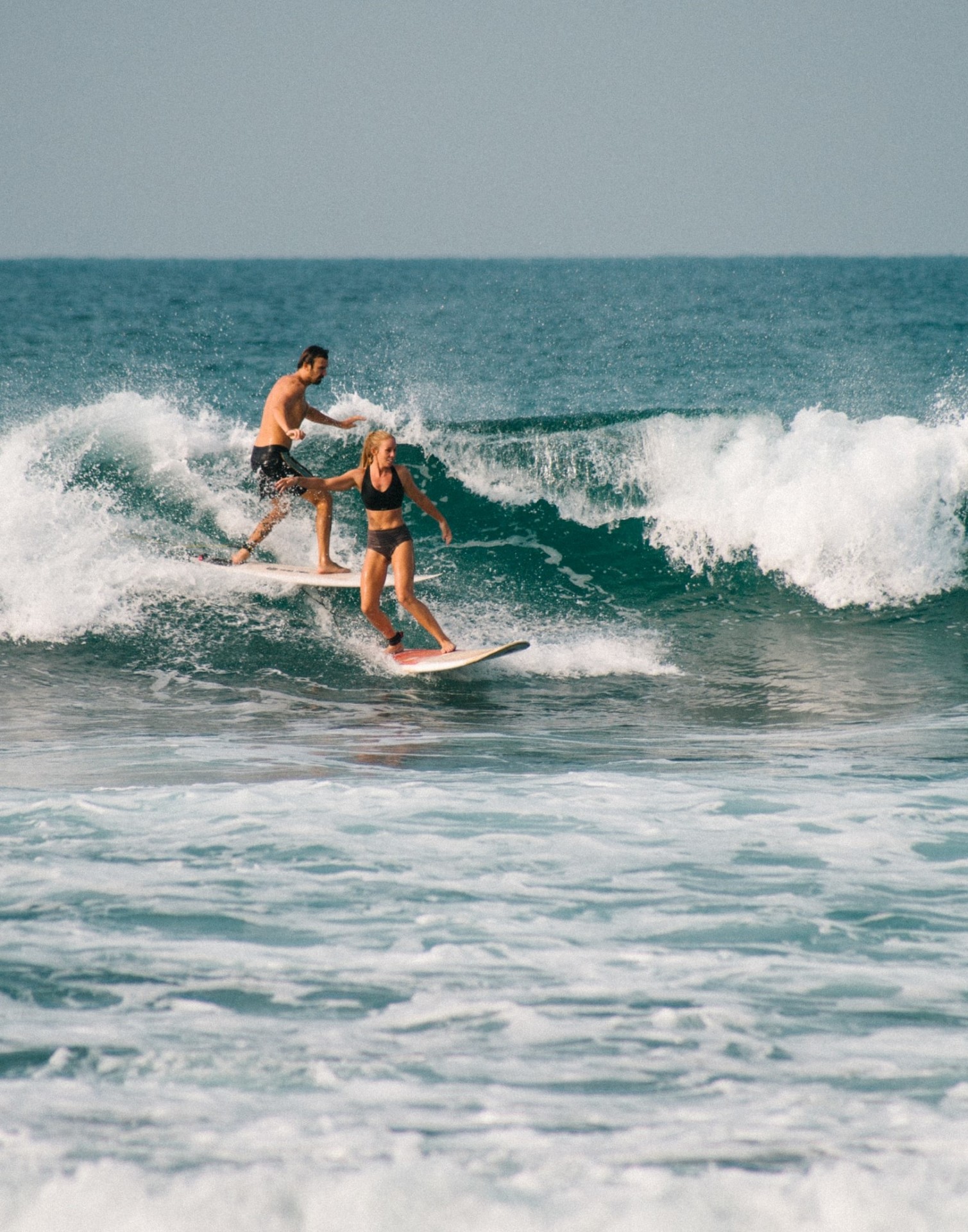
Do Surfers Run Into Each Other? 5 Common Reasons (+8 Tips)
-

Do Surfers Have Beards? Pros & Cons You Should Know (+4 Tips)
-
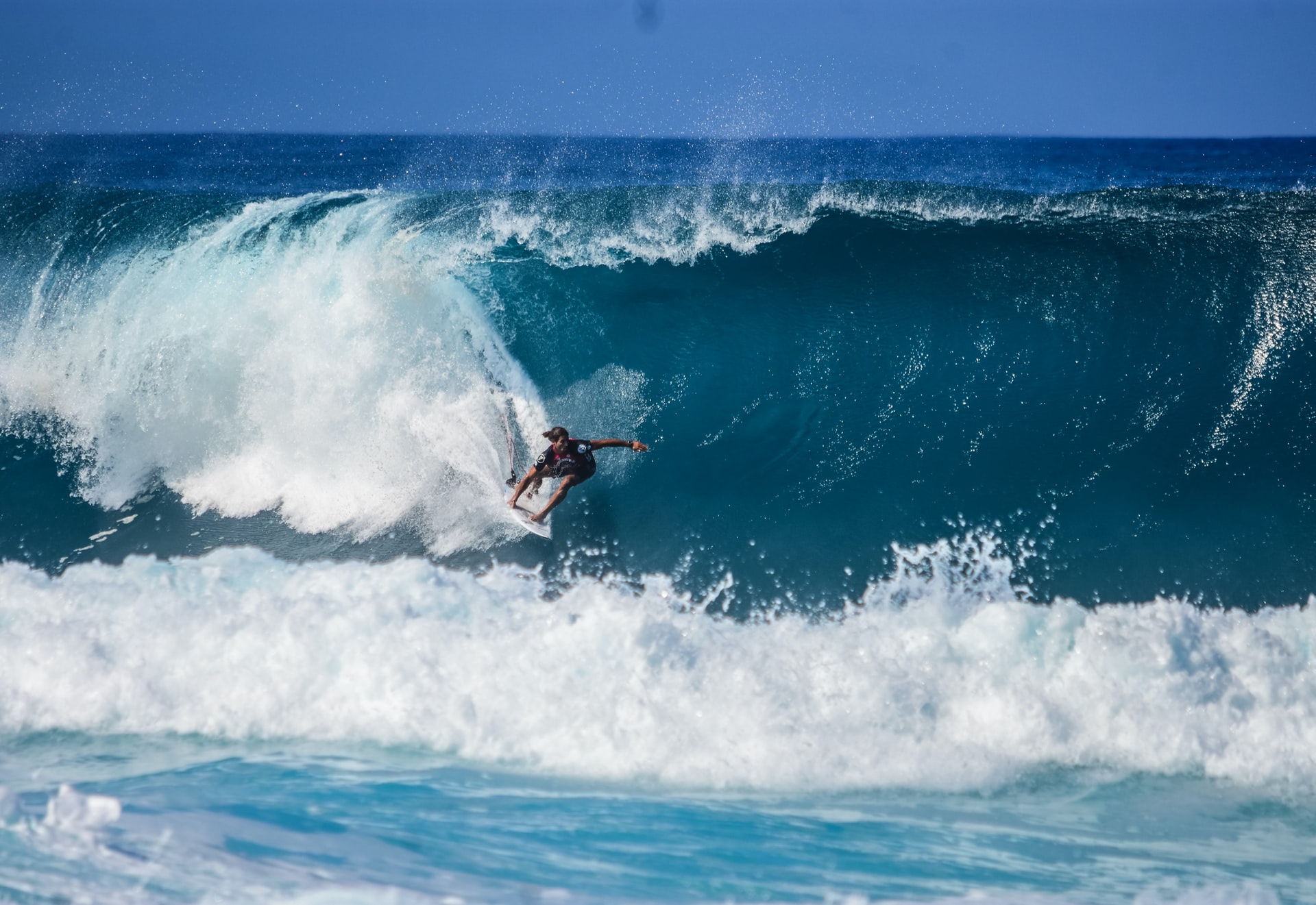
Do Surfers Like Constructive or Destructive Waves? (+Pros & Cons)
-

How to Surf Safely: 34 Crucial Tips (Every Surfer Should Know)
-

Do Pro Surfers Use Leashes? (+6 Reasons Why You Should Too)
-
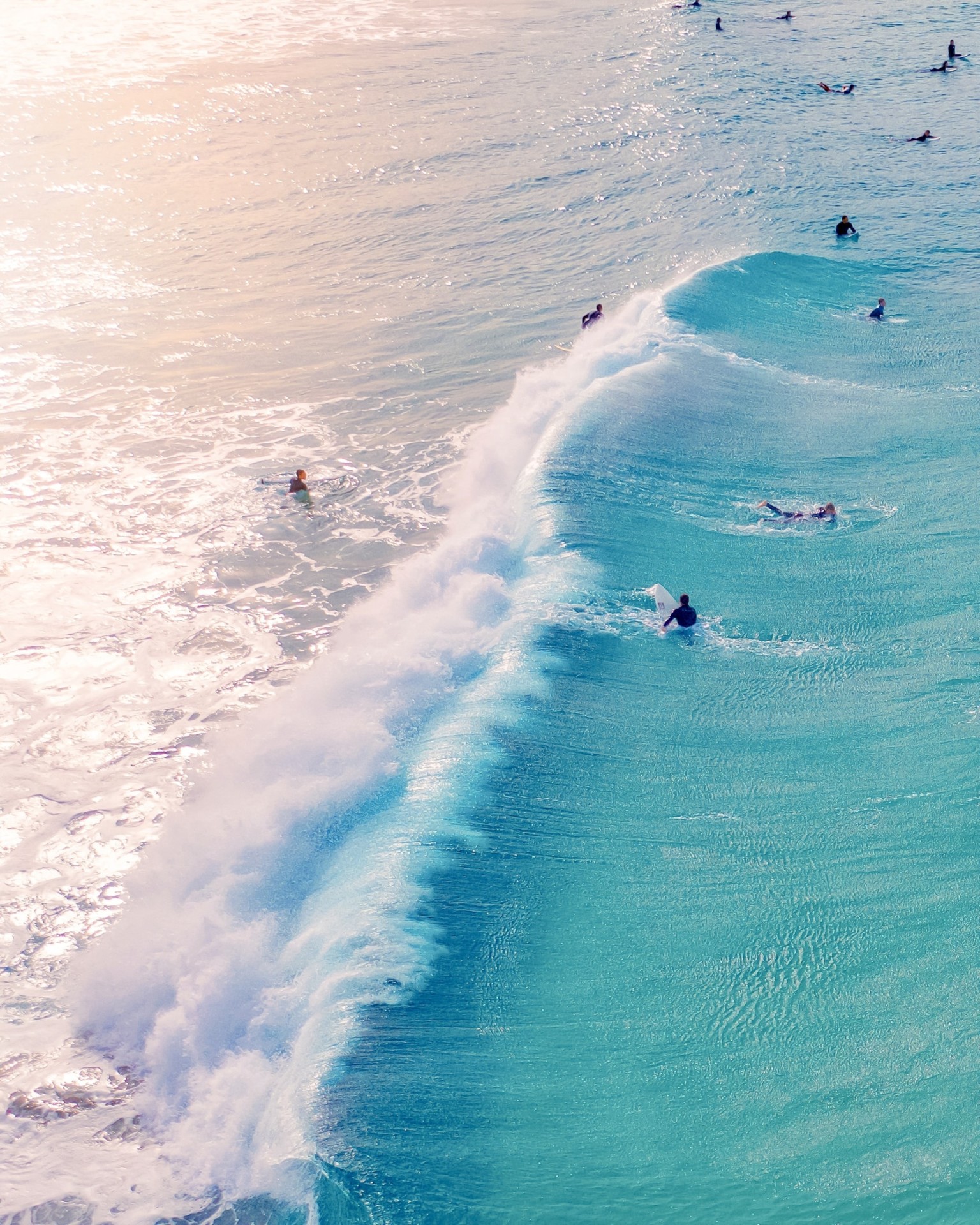
Do Many Surfers Drown? Here Are the Facts (+4 Common Reasons)
-

Do Surfers Wear Life Jackets? (7 Reasons Why They Don’t)
-
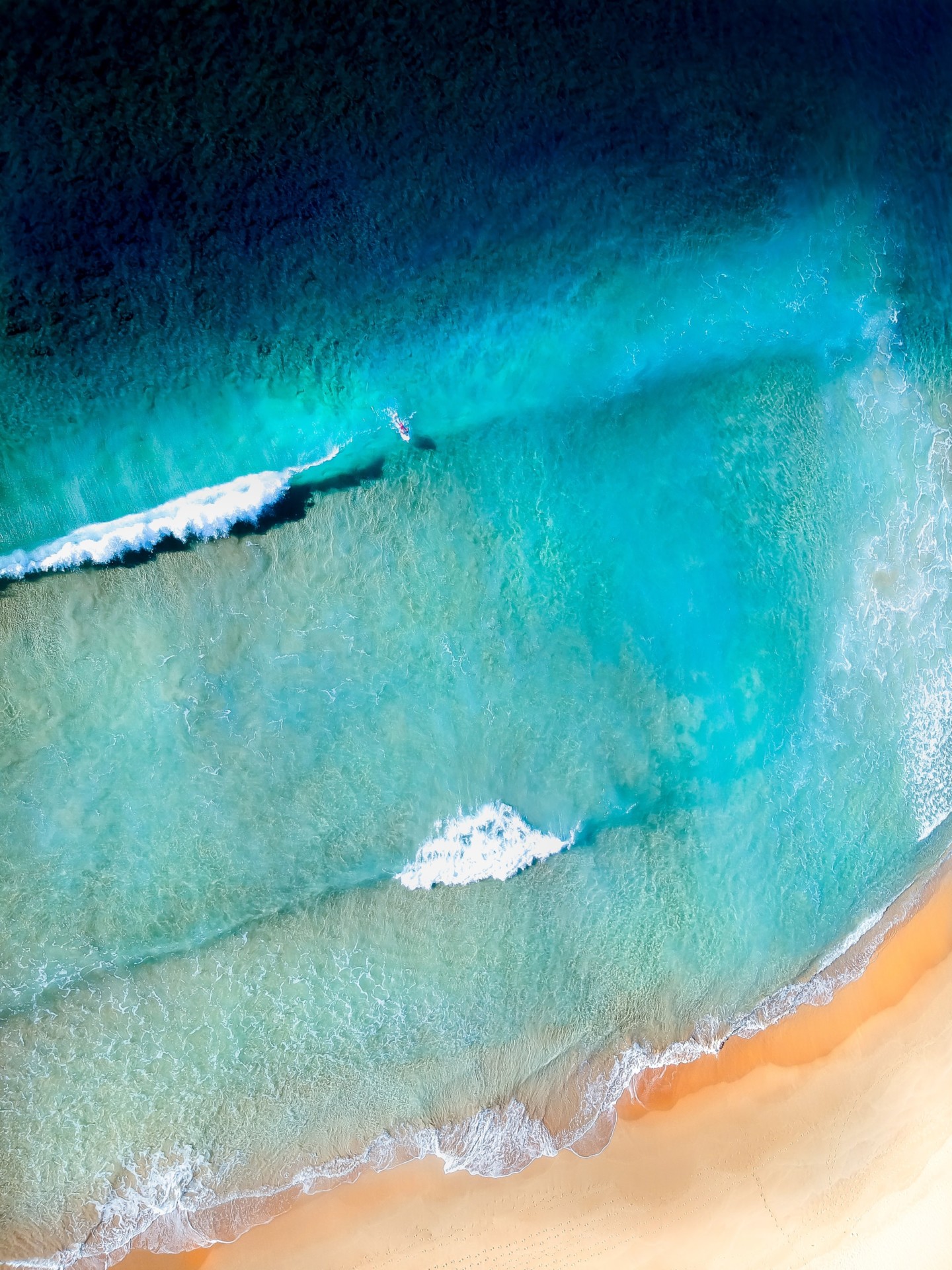
Do Surfers Like Rip Currents? (& How to Use Them Safely)

